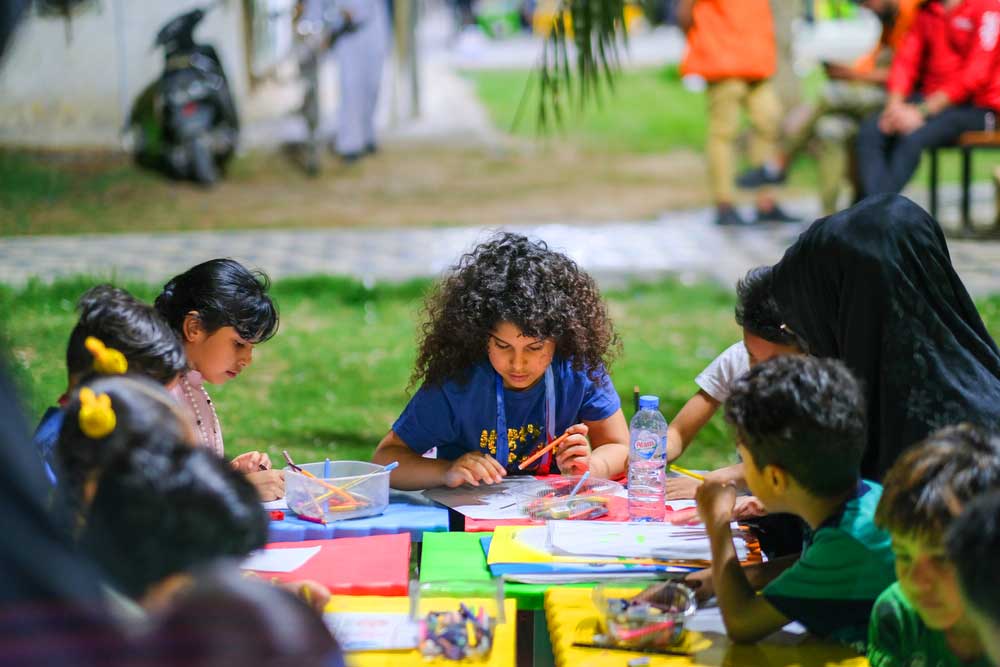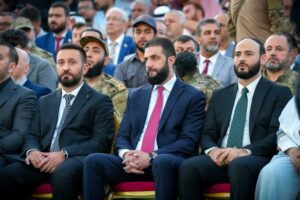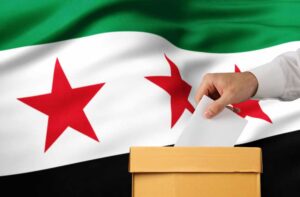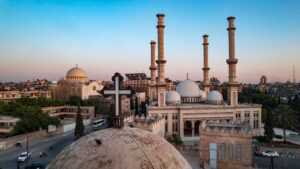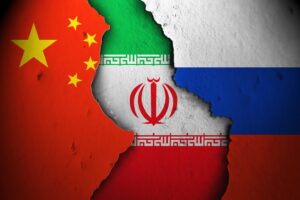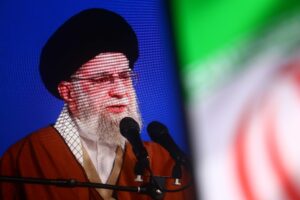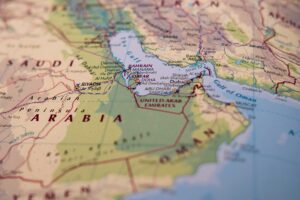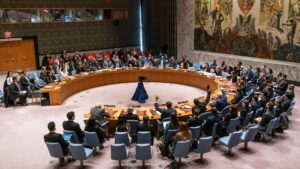Introduction
Wars, conflicts and resistance campaigns not only destroyed the economy of Iraq, but also severely damaged the education system.
The public education system is the backbone of any civil society and the development or progress of a nation is connected with as well as measured by the development of its educational system. Since its creation, Iraq has always found itself in the midst of conflicts, political agitation, constitutional unrest and civil wars. The Anglo-Iraqi conflict, resistance against the monarchs, Sunni-Shia conflict, the Kurdish-Arab conflict, the Iran-Iraq wars, the invasion of Kuwait by Iraq, the US-led coalition war in 1991, Kurdish uprisings, the Anfal campaign, the Halabjah chemical attacks, the US invasion of Iraq, and Daesh’s onslaught in 2014 are some of the most prominent conflicts in the history of contemporary Iraq. These wars, conflicts and resistance campaigns not only destroyed the economy of Iraq, but also severely damaged the education system of Iraq.
During Saddam Hussein’s regime, the Iraqi education system was based on maintaining sectarian divisions and oppressing the marginalized ones, but as everything was controlled by the dictator, no one could challenge or question this system.[i] Regime changes in 2003 flipped the coin, but did not bring any change. The U.S. invasion of Iraq provided safe havens to internal and external extremist forces from which they could exploit sectarianism within society. It paralyzed and damaged the socio-economic structure of Iraqi society and destroyed its education system.
This article sheds some light on the historical background of the education system of Iraq and the current situation, and explores the way forward towards a better, all-inclusive and sustainable education system.
A brief historical background
Religiously, linguistically and ethnically Iraq is home to a number of ancient groups of people. Undoubtedly, the Iraqi population is predominantly Muslim, which comprises up to 97% of the total population, out of which more than 60% are Shia Muslims while the rest are Sunnis.[ii] These Muslims belong to various ethnicities including Arabs, Kurds, Fayli Kurds, Turkmen and Shabaks; other ethnic or religious minorities include Yazidis, Assyrians, Chaldeans, Kaka’i, Yarsanis, Zoroastrians, Sabians-Mandaeans, Armenians and Jews.
This socio-religious diversity was not beneficial for maintaining a controlled society, and the dominance of the Muslim majority led to the marginalization of some groups and religions.[iii] This marginalization was even reflected in the Iraqi constitution, which states that no law can be passed that conflicts with the Quran and Sunnah. As a result, non-Muslim religious minorities are forced to follow Islamic laws such as having to marry according to Islamic law. Although the Iraqi constitution guarantees the rights of some religions in Iraq, it does not guarantee the rights to practice other religions such as the Baha’i Faith, Zoroastrianism, and Yarasani. These policies have been reflected in the education system, leading to extreme and intolerant ideologies such as the Islamic State of Iraq and Syria (ISIS).
The educational system in Iraq was established when the modern Iraqi state was created in 1921.[iv] Despite the lack of resources, schools and infrastructure, the British Mandate government helped Iraq establish schools. Before that, during the Ottoman Empire, there was no formal educational system, although some lessons were offered in madrassas—religious schools. The educational system, which was established in 1921, lacked teachers, so the government had to bring professionals from outside of Iraq to teach. The curricula were based on basic subjects, including history and the Arabic language, but the main focus was on Islamic teachings. Education was not the priority during the monarchy, but after the military coup in 1958 many state policies, including education, changed. This was the time when religio-political ideologies began to be included in the educational system. Successive governments after 1958 came with strong ideological concepts and beliefs, such as nationalism and some forms of communism (Alwan, 2004).[v] The main educational curricula consisted of Islamic teachings, but also included Christian, Assyrian and Chaldean tenets. In addition to the Arabic language, the Kurdish and Turkmen languages were also taught in the northern regions of Iraq.
The Iraqi education system has never been an independent system in terms of ideas, as the state directly sponsors the curriculum.
The narrative that was built through the education system in the 1960s and 1970s played an important role in Iraq’s wars against Iran, Kuwait, the Kurds as well as in the Gulf War. The Iraqi education system has never been an independent system in terms of ideas, as the state directly sponsors education, specifically the curriculum, which the government considers highly sensitive and important to build specific narratives in. It is also important to highlight that during this era until 2003, the Sunni narrative has been consolidated because the governments believed the Sunni doctrine to be the only valid Islamic doctrine, leading to the marginalization of Shia Muslims.[vi] The Iraqi education system faced many problems, but the two most important problems were: 1) Low salaries and an absence of professional training for teachers; and 2) a lack of a proper mechanism and infrastructure to change and update curricula according to the needs of the people. The curricula had not been changed from 1980 until the fall of the regime in 2003.[vii]
Post-2003 Iraqi education system
As mentioned above, the pre-2003 regime invested its resources in building narratives, but after Saddam Hussein’s fall, the state did not pay enough attention to education, specifically Islamic education. It continued on the same philosophy as before. As a result, Iraqi society and its education system both continued to suffer from the consequences. Many schools are no longer qualified to receive students, as they lack basic materials such as libraries, computers, up to date syllabi, playgrounds and recreational centers for the students. The sectarian wars and political conflict in Iraq also affected the level of education. Every sector has deteriorated, and child labor has increased due to the wars and conflicts. War always makes it difficult for students to complete their studies. Many families lost their parents, which forced young boys to become the sole breadwinners.
An education system that was already going through turmoil was further hit by war and sectarianism. It never got a chance to rebuild its core and establish an infrastructure that could compete with international standards. Before 2003, Sunni Arab governments were trying to marginalize Shia and Kurdish communities, and then it was the Shia-Kurds’ turn to do the same. This time, the sectarian discourse and the policy of discrimination and marginalization of the larger society by the Shiite-Kurdish majority government have affected other groups such as the Sunnis in the western provinces of Iraq. A community that had already been told that their narrative was the only valid narrative saw this nexus as a threat. Some external and internal factors created an environment suitable for the emergence of radical movements against the state and ISIS emerged (Mansour, 2017).[viii]
The system lacks in-depth analysis, critical thinking and creativity.
Other problems facing education in Iraq today are lack a of pedagogy that values critical thinking, inflexibility of the system, and a lack of versatility and depth in the curriculum. The method of teaching is based on indoctrination as well as memorization without understanding. The system lacks in-depth analysis, critical thinking and creativity (UNESCO, 2003).[ix] The curriculum is superficial and shallow, and relies on an old-fashioned single narrative without regular updating. Any education system that is based on indoctrination and repetition, following blindly without question, produces radical minded people, as extremism depends on the absence of narrative analysis.
ISIS treated these children as future assets that they could use to control future generations and breed extremism.
After ISIS took control of one third of Iraq, they developed a strategy of mass enrollment and created their curriculum to educate the next generation of fighters. They enrolled 116,176 children in the areas of Raqqa, Ramadi and Nineveh.[x] They started building their fighting force and taught young boys about “Aqeedah, Sharia, Life of the Prophet Muhammad, Islamic Education and Qur’anic Studies” along with subjects in science.[xi] On the one hand, ISIS treated these children as future assets that they could use to control future generations and breed extremism. On the other hand, the Iraqi government rejected the families of these young boys affiliated with ISIS by withdrawing their national identity cards and placing them in isolated camps in the middle of the desert. This strategy was counterproductive. More than 250,000 people, the majority women and children, were stripped of their basic rights, similar to what Saddam Hussein did to the Fayli Kurds.[xii] [xiii] It resulted in further rebellion, animosity and rage against the Iraqi state. This marginalization and the policy of exclusion is not only bad for the state of Iraq, but it will also likely bring horrific results in the future in terms of increasing acts of violence and extremism.
The way forward
The process of rebuilding an education system is complex and requires efforts in formulating creative, critical and analytical curricula, as well as infrastructure and policies for student welfare. Decades of wrong policies, wars, sectarian conflict, ethno-religious tussles and geopolitical rifts have brought Iraq to a point where educational reforms are inevitable, but it is obvious that the state of Iraq is unable to deal with this issue on its own. Iraqi civil society as well as the international community have to participate in resolving this problem. In order to end the issue of sectarian dimensions and ethno-religious division within Iraqi society, the authorities need to take certain steps.
Adopting a single vision or interpretation of religion would create further divisions in the society.
The first step is creating a multiplicity of curricula and visions for all religious parties present in Iraq. Iraq is a multicultural and multi-religious society: not only does it have other religious minorities, but the Muslim community is also divided among four major sects: Shias, Sufis, common Sunnis and Salafis. Therefore, adopting a single vision or interpretation of religion would create further divisions in the society. This solution may create gaps that are difficult to bridge due to many points of contention among Islamic sects and, generally, other religions in Iraq. But if a serious effort is made to establish this multi-pronged approach, in an objective manner, it can be an acceptable solution for all parties because it will acknowledge the coexistence of these diverse groups and reduce the intensity of conflict and tension.
Ideally speaking, any constitution and education system should be secular and free from biases. Another solution to rebuild the Iraqi education system is to establish a secular education system that welcomes criticism and helps to eliminate problems and obstacles such as religious extremism. The secular curriculum does not mean the complete relegation of religion from the study. Rather, the curriculum should teach all the religions and sects in Iraq in simple and easy-to-understand formulas.[xiv] This approach promotes tolerance, as it expresses objectivity and analysis of the social and religious realities, as well as the historical dimension of these religions, some of which have been prevalent in Iraq since ancient times.
Religious extremism did not come into being by chance, but rather by consolidation of one identity at the exclusion of others.
Post-Daesh Iraq is in a good situation to rebuild its education system, as the international community is aware of the problem and is willing to support the effort. Religious extremism did not come into being by chance, but rather by consolidation of one identity at the exclusion of others. Therefore, it is necessary to build a truly pluralistic education system that represents a plural society, in which the “marginalized” might find coexistence and peace, and the “majority” can be free from biases.
Building the educational system must be preceded by providing a decent life for children.
Children have always been used as a tool to benefit the masterminds because it is easy to control and manipulate them. ISIS succeeded in converting and brainwashing many children, and international observers and analysts are sometimes unable to comprehend how people can detonate themselves or carry out horrific crimes under the pretext of jihad and the killing of so-called “apostates”. What they fail to understand is the power of narrative building, indoctrination and blind faith. Therefore, building the educational system must be preceded by emphasizing the concept of childhood by providing a decent life for children, such as up to date curricula, entertainment programs on television that teach ethics in dealing with others, the establishment of clubs to develop children’s skills, and nurturing their talents.
To conclude, rebuilding the education system in Iraq is one of the needs of the hour. It should start with the infrastructure, and end with a neutral curriculum with critical, analytical, and comprehensible content.
[i] Rohde, Achim. (2013). Change and Continuity in Arab Iraqi Education: Sunni and Shi’i Discourses in Iraqi Textbooks Before and After 2003. Comparative Education Review. 57. 711-734. 10.1086/671561.
[ii] International Religious Freedom Report. (2020). United States Department of State, Office of International Religious Freedom.
[iii] International Religious Freedom Report. (2020). United States Department of State, Office of International Religious Freedom.
[iv] Akrawi, Matta (1935) “The New Educational System in Iraq.” The Open Court: Vol. 1935: Iss. 3, Article 3. Available at: https://opensiuc.lib.siu.edu/ocj/vol1935/iss3/3.
[v] Alwan, Alaʻdin A. S. (2004). Education in Iraq: Current Situation and New Perspectives: A Report on the Situation Today and Our Strategies for the Immediate Future. Wizārat al-Tarbiyah, Ministry of Education, Iraq.
[vi] Shakir, M. U. (2021). “History of Shia, Sunni and Yazidi Conflict: A Political, Social or Religious Conflict and its Impact on the Peace Process in the Middle East with Special Focus on Kurdistan – Northern Iraq.” University of Innsbruck. https://diglib.uibk.ac.at/urn:nbn:at:at-ubi:1-85176.
[vii] Alwan, Alaʻdin A. S. (2004). Education in Iraq: Current Situation and New Perspectives: A Report on the Situation Today and Our Strategies for the Immediate Future. Wizārat al-Tarbiyah, Ministry of Education, Iraq.
[viii] Mansour, Renad. (2017). “Iraq After the Fall of ISIS: The Struggle for the State.” Middle East and North Africa Programme.
[ix] UNESCO. (2003). “Situation Analysis of Education in Iraq.” United Nations Educational Scientific and Cultural Organization, Division of Educational Policies and Strategies, Paris.
[x] Arvisais, Olivier and Guidère, Mathieu. (2020). “Education in conflict: how Islamic State established its curriculum.” Journal of Curriculum Studies, 52:4, 498-515, DOI: 10.1080/00220272.2020.1759694.
[xi] Ibid.
[xii] Shakir, M. U. (2021). “History of Shia, Sunni and Yazidi Conflict: A Political, Social or Religious Conflict and its Impact on the Peace Process in the Middle East with Special Focus on Kurdistan – Northern Iraq.” University of Innsbruck. https://diglib.uibk.ac.at/urn:nbn:at:at-ubi:1-85176.
[xiii] United Nations Assistance Mission for Iraq. (2020). “The Right to Education in Iraq. Part One: The legacy of ISIL territorial control on access to education.” Office of the United Nations High Commissioner for Human Rights, February 2020, Baghdad, Iraq.
[xiv] International Religious Freedom Report. (2020). United States Department of State, Office of International Religious Freedom.

